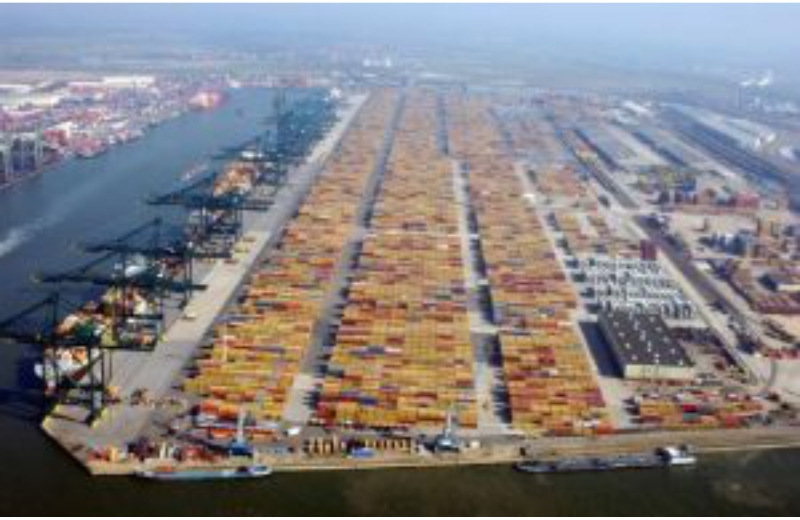During the past quarter, the total maritime cargo turnover of the Port of Antwerp fell by 3 per cent, bringing the situation back to normal following the record figures of the first quarter in 2018. As the quarter unfolded, the total maritime cargo turnover again showed an upward trend. This trend is expected to continue in the coming months, also thanks to extra MSC cargo between Antwerp and Northern Europe from April.
Container traffic: The strongest month of March ever
Container traffic put in a strong month at the Port of Antwerp in March 2019, and even outperformed March 2018, the previous best month ever. The container market share (in tonnes) of the port rose to 27.5 per cent in 2018, or an increase by 0.7 per cent. This allows the port to post the highest increase in the Hamburg-Le Havre range. Net growth amounted to 650,000 TEUs, highlighted a release.
Mr Jacques Vandermeiren, CEO of the Port Authority, explains: “Our container throughput continues to grow despite the weakened economic outlook. This is good news for Port of Antwerp and consolidates our excellent position as a container cargo hub in the global logistics chain.”
Break-bulk: Slight decline on the artificially high first quarter in 2018 due to US levies
Conventional break-bulk did rather well in the first quarter of 2019, but moderately well compared to the exceptional first quarter of 2018, driven by the build-up of steel stocks in anticipation of US import levies. As a result, iron and steel transhipment remained 5 per cent below last year’s level.
RoRo transhipment was up 3.2 per cent. Despite the decline in the number of rolling stock units, the number of tonnes went up thanks to the average weight per vehicle, especially in the utility vehicle category.
Dry bulk: Top month for fertilisers
During the first quarter, total dry bulk transhipment decreased by 8.8 per cent as a result of the lower throughput of ore (-22.9 per cent), coal (-16.5 per cent), scrap (-10.2 per cent) and fertilisers (-2.2 per cent). Throughput of sand and gravel was up 6 per cent. Throughput of fertilisers made a strong recovery in March, with the best month throughput since February 2011.
Dry bulk is traditionally characterised by high volatility, with various commodities having highly varying characteristics, the release pointed out.
Liquid bulk: Recovery in March after a weak January & February
Liquid bulk recorded a decline of 8.6 per cent in the first quarter. After two weaker months (-12.4 per cent), March showed a marked recovery, albeit less pronounced for petroleum derivatives, the largest segment within liquid bulk. A mild winter in 2019 versus a colder one in 2019 has an impact on the transhipment of petroleum derivatives. Also, the slowdown in growth of the EU economy had implications for production volumes and energy demand, as did the evolution of crude oil prices.
Of particular note was the recovery in the transhipment of petroleum and chemicals. After three months, crude oil transhipment remains unchanged with 0.1 per cent. Chemicals remain virtually unchanged (-0.6 per cent) and saw a nice recovery in March following a sharp decrease in January and February, the release added.
Ms Annick De Ridder, Alderman for the port, concludes: “We can look back on a strong first quarter with continued growth in container traffic. These figures confirm the role of Port of Antwerp as one of the main economic pillars of the country and as a major employer. To secure the future prosperity of our port, we urge Flanders to proceed soon with the approval of the draft preference decision on container handling capacity.”








